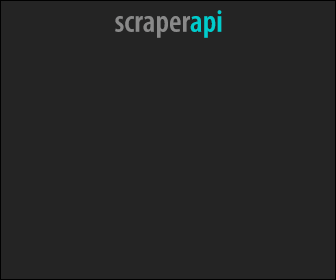Facilitating Real-Time Collaboration- Harnessing Pusher Technology in Web and Mobile Applications in 2025
Last updated: Aug 18, 2025
In the ever-evolving landscape of web and mobile applications, the imperative to foster user engagement and interaction has become synonymous with success. Departing from conventional paradigms, modern applications are now expected to deliver dynamic, real-time experiences that encourage collaboration among users. At the forefront of this transformative shift stands Pusher, a robust technology that empowers developers to seamlessly integrate collaborative features into their applications, thereby elevating the overall user experience through heightened interactivity.
The Significance of Collaboration in Modern Applications
The integration of collaborative features within applications has transcended its traditional domain, becoming a ubiquitous expectation across diverse sectors. Users now anticipate real-time interactions and collaborative functionalities, whether they are engaging with social media platforms or utilizing project management tools. These features not only enhance user engagement but also contribute significantly to the overall value proposition of an application.
So, in meeting the growing demand for seamless collaboration, hiring a skilled Pusher developer (https://lemon.io/tech-stacks/pusher/) becomes paramount, ensuring the successful integration of real-time features and enriching the overall user experience.
Comprehensive Insights into Pusher Technology
At the core of enabling real-time collaboration lies Pusher, a hosted service designed to simplify the implementation of such features in web and mobile applications. Leveraging WebSocket technology, Pusher establishes a persistent, bidirectional connection between servers and clients, facilitating instantaneous data transfer and communication.
Crucial Components of Pusher: Channels, Events, and Presence Channels
- Channels: Serving as communication pipelines, Pusher channels delineate specific topics or areas of interest within an application.
- Events: Messages sent over channels, events trigger specific actions or updates in the application, broadcasting information to all connected clients subscribed to the relevant channel.
- Presence Channels: Particularly invaluable in scenarios requiring user-specific interactions, Presence Channels allow developers to track and manage individual users in real time. This capability proves essential for collaborative features involving multiple users engaging simultaneously.
Implementing Real-Time Chat Applications with Pusher
Real-Time Chat Implementation
Real-time chat, a ubiquitous collaborative feature, is seamlessly facilitated by Pusher. Developers can create chat applications where messages are instantly received without necessitating manual refreshing. Each sent message triggers a Pusher event, promptly updating the chat interface for all participating users.
User Tracking with Presence Channels
In multi-user environments, Pusher’s Presence Channels offer a robust solution. By utilizing these channels, developers can track user presence in real time, extending beyond mere online status monitoring. Presence Channels enable insights into user activities such as typing indicators and message-read statuses, enriching the collaborative nature of the chat environment.
Extending Real-Time Collaboration to Mobile Applications
Synchronized Data Updates
Pusher’s versatility extends seamlessly to mobile platforms, enabling synchronous data updates. In collaborative mobile applications, such as document editing or project management tools, Pusher ensures changes made by one user are instantly reflected in the interfaces of all connected users. This synchronous updating fosters a sense of real-time collaboration, transcending communication barriers.
Dynamic User Interfaces
Mobile applications can leverage Pusher to create dynamic and interactive interfaces. For instance, in a collaborative drawing application, changes made by one user to the canvas are immediately visible to others, cultivating a shared, real-time experience. Pusher’s event-driven architecture facilitates the seamless propagation of updates, ensuring a consistent and engaging user experience.
Real-Time Collaboration in Project Management Tools
Live Updates on Tasks and Progress
For project management tools, real-time collaboration is transformative. Pusher enables developers to implement features where team members receive instant updates on task assignments, progress, and alterations in project timelines. This leads to a more efficient and collaborative work environment, eliminating delays associated with waiting for manual updates.
Collaborative Editing and Commenting
In applications involving document collaboration, simultaneous editing and commenting are paramount. Pusher simplifies the implementation of such features by ensuring changes made by one user are reflected instantaneously for others. This creates a seamless collaborative environment where team members can provide feedback, make edits, and collaborate in real time.
Scalability and Reliability of Pusher Technology
Pusher not only simplifies the implementation of real-time collaboration but also excels in scalability. Whether an application serves a handful of users or boasts a substantial user base, Pusher adeptly manages the demands of real-time communication without compromising performance. The hosted nature of Pusher relieves developers of infrastructure management burdens, allowing them to concentrate on building collaborative features.
Addressing Challenges and Considerations
While Pusher streamlines the integration of real-time collaboration features, developers must confront specific challenges. These include ensuring data consistency, handling potential conflicts in simultaneous edits, and implementing robust security measures to safeguard sensitive information exchanged in real time. Through meticulous planning and adherence to best practices, developers can effectively address these challenges.
The Future Landscape of Collaborative Features with Pusher
As technology continues its inexorable advance, the demand for real-time collaboration features in applications is poised to burgeon. Pusher, with its adaptability and seamless integration capabilities, positions itself as a linchpin for developers seeking to meet evolving user expectations. The future holds promising prospects as Pusher evolves and incorporates new features, further enhancing real-time collaboration across diverse application domains.
Conclusion: Empowering Developers for a Collaborative Future
In the realm of web and mobile applications, the integration of collaborative features has become synonymous with innovation. Pusher, with its robust technology and versatility, empowers developers to craft applications that transcend traditional boundaries, offering users a dynamic and engaging experience. Whether facilitating real-time chat, collaborative editing, or live updates, Pusher stands as a cornerstone for creating the collaborative future of applications. As developers continue to harness the capabilities of Pusher, the collaborative landscape of web and mobile apps is poised for a transformative journey, where users interact seamlessly and share experiences in real time.

